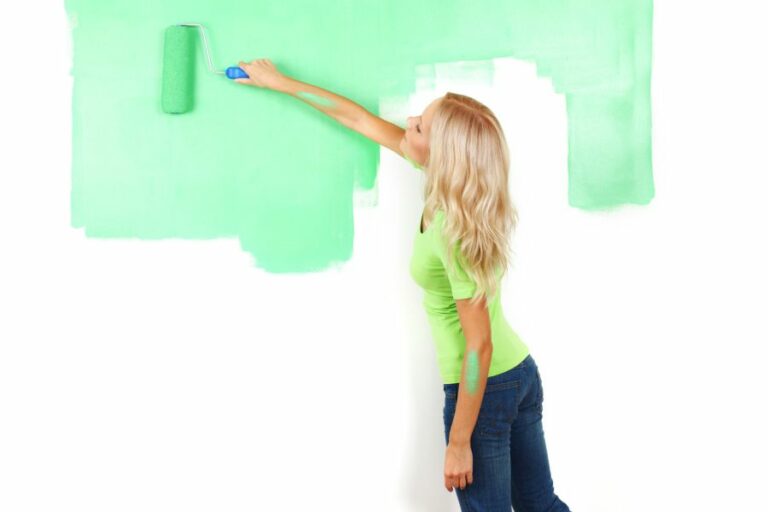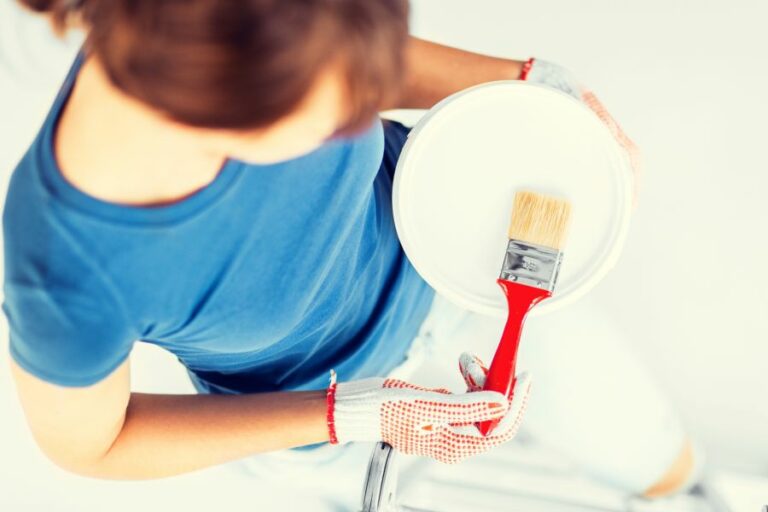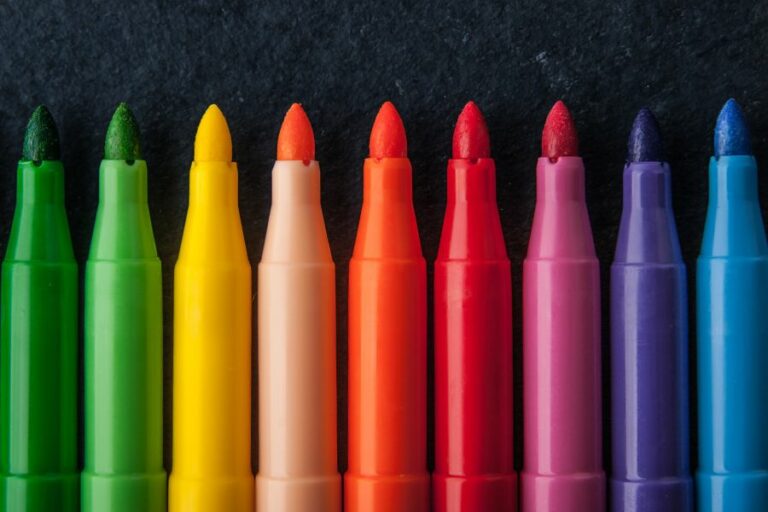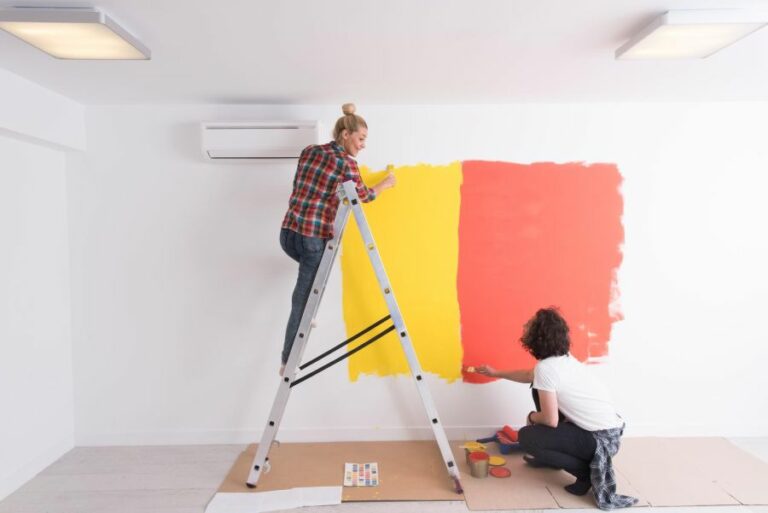Paint For Outdoor Murals, 25 Things You Should Know
Discover the vibrant world of outdoor murals and unleash your creativity with our expert guide to selecting the perfect paint for your next masterpiece. Learn the essential tips and tricks to create stunning, long-lasting artwork that transforms dull walls into captivating canvases and withstands the test of time and elements.
Paint for outdoor murals:
Selecting the right paint for outdoor murals is essential for longevity and weather resistance. Key factors to consider include durability, UV resistance, adhesion, compatibility, ease of application, and budget. Acrylics, mineral silicate paints, and spray paints are recommended options, each with its benefits and limitations. Consult local mural artists, street art communities, or art supply stores for personalized advice and tailored recommendations based on their experiences.

Explore various paint options, techniques, and essential materials to create impressive and long-lasting outdoor murals. Resistant to weather elements, these paint recommendations will ensure your artistic vision remains vibrant and captivating for years to come. Unleash your creativity today!
Contents
- 1 Exterior Mural Paint for Outdoor Artworks
- 2 What Type of Paint is Recommended for an Outdoor Mural Project?
- 3 Which Kind of Paint is Most Suitable for Mural Artwork?
- 4 What is the Process for Painting an Outdoor Wall Mural?
- 5 How can you effectively weatherproof an exterior mural for long-lasting protection?
Exterior Mural Paint for Outdoor Artworks
Outdoor murals are a creative and engaging way to beautify public spaces, infuse neighborhoods with art and culture, and showcase the talent of local artists. For such projects to stand the test of time and weather, using the right type of paint is crucial.
• Key Factors to Consider When Choosing Outdoor Mural Paint
– Durability and UV Resistance
For an outdoor mural to remain vibrant and intact for years to come, the paint needs to withstand natural elements, such as sunlight, rain, and temperature fluctuations.
High-quality outdoor paints should be resistant to fading, chipping, and peeling, with a strong UV resistance to prevent colors from losing their brightness.
– Adhesion and Compatibility with Surface
The paint should adhere well to the chosen mural surface, such as concrete, brick, or wood, without requiring a multitude of layers or causing visible imperfections. Some paints may also require the use of a primer, so consider whether the paint’s compatibility with specific primers affects your choice.
– Ease of Application and Cleanup
Depending on the artist’s skill level and the nuances of the mural design, certain outdoor paints may be more user-friendly than others. Opt for a paint that is easy to work with, quick-drying, and forgiving of mistakes.
Also, consider whether the paint can be cleaned with soap and water or if special solvents are required.
– Budget and Availability
While high-quality paint can be a significant investment, finding a balance between cost and quality is essential. Determine the volume of paint needed for the project, considering the desired level of opacity and coverage, and research available options that fit within your budget.
• Recommended Outdoor Mural Paints
– Acrylics: A Versatile Option
Acrylic paint is a popular choice for many outdoor mural projects due to its versatility, durability, and wide range of available colors. High-quality acrylics can endure harsh weather conditions, provide excellent adhesion, and boast a quick drying time.
Some notable acrylic brands for outdoor murals include:
- Golden Artist Colors offers professional-grade Outdoor Mural Acrylics specifically designed for exterior artwork. They are UV-resistant, water-resistant and adhere well to various surfaces.
- Liquitex Heavy Body Acrylics provide rich, vibrant colors with excellent lightfastness and durability. These heavy body paints are also great for producing textured effects.
- Nova Color Artists’ Acrylics are known for their rich pigmentation and versatility, suitable for a variety of surfaces such as brick, concrete, and wood.
– Mineral Silicate Paints: An Eco-friendly and Long-lasting Choice
Mineral silicate paints, also known as mineral paints or silicate paints, consist of a silicate binder combined with natural mineral pigments. These paints boast exceptional UV resistance, color stability, and durability, making them ideal for outdoor murals.
Additionally, they are eco-friendly and free of solvents or VOCs (volatile organic compounds).
- Keim Mineral Paints is a reputable brand offering a range of silicate-based paints specifically designed for artistic use on external murals. Their paints boast impressive longevity, with some murals lasting up to 100 years.
– Spray Paints: A Convenient Alternative
Spray paints designed for outdoor murals offer a convenient alternative to traditional brush-applied paints. They provide quick coverage, a range of vibrant colors, and ease of application. When using spray paint for outdoor murals, opt for brands that offer UV resistance, low pressure for detailed work, and compatibility with various surfaces.
- Montana GOLD is a popular choice among street artists and muralists due to its extensive color range, low-pressure system for precise application, and compatibility with multiple surfaces.
- Molotow Premium offers high-quality, UV-resistant, and weatherproof spray paints explicitly designed for outdoor art projects, known for their excellent coverage and vibrancy.
• Final Tips for Outdoor Mural Paint Selection
In conclusion, when choosing paint for outdoor murals, strike a balance between key factors, such as durability, UV resistance, ease of application, and budget constraints.
Acrylics, mineral silicate paints, and outdoor spray paints are all notable options worth considering, each with unique benefits and limitations.
It may also be helpful to reach out to local mural artists, street art communities, or art supply stores for personalized recommendations and advice based on their experiences.
With the right paint selection, your outdoor mural will not only be visually stunning but also stand the test of time in the face of natural elements.
What Type of Paint is Recommended for an Outdoor Mural Project?
Outdoor murals are a wonderful way to add some visual interest and creativity to any public space. However, choosing the correct type of paint is crucial to the success and longevity of these artistic creations.
• Acrylic Paint: A Popular Choice for Do-It-Yourself Muralists
Acrylic paint is a widely-used choice for outdoor murals due to its versatility, water resistance, and relatively affordable cost. It is also user-friendly, which is why many muralists, including beginners, opt for acrylic paint.
– Pros of Using Acrylic Paint
- Water-based and non-toxic: Being water-based, it is easy to clean up after painting, and its non-toxic nature makes it safe to use on outdoor surfaces.
- Dries quickly: Acrylic paint dries relatively fast, which is a significant advantage when working on large projects with multiple layers or colors.
- Wide color range: Acrylic paints are available in an extensive range of colors, allowing for greater creativity in your mural design.
– Cons of Using Acrylic Paint
- Susceptible to UV damage: The major drawback of using acrylic paint for outdoor murals is its vulnerability to UV rays. Over time, exposure to sunlight can cause the colors to fade.
- Not as long-lasting as other paint types: Unlike other paint types specifically designed for outdoor use, acrylic paint may not last as long, requiring more frequent touch-ups or repainting.
Recommendation: If you’re a beginner muralist or have a limited budget, acrylic paint can be a good choice due to its user-friendly nature and affordability. However, be prepared to conduct regular maintenance to keep your mural looking fresh.
• Latex Paint: A Reliable and Durable Option
Latex paint, or water-based paint, is another popular option for outdoor murals. While it shares some similarities with acrylic paint, latex paint is formulated specifically for exterior use, making it a more durable option for outdoor artwork.
– Pros of Using Latex Paint
- Highly durable: Latex paint is designed to withstand the elements, making it less prone to peeling, chipping, or fading.
- Resistant to mold and mildew: Due to its water-resistant properties, latex paint prevents the growth of mold and mildew on your mural, which can help prolong its life.
- Environmentally friendly: Latex paint emits very low levels of volatile organic compounds (VOCs), making it a more eco-friendly option compared to oil-based paints.
– Cons of Using Latex Paint
- May not adhere well to certain surfaces: Latex paint may have some difficulties adhering to surfaces with a high oil or silicone content.
- Limited color options: While latex paint is available in various colors, its range may not be as extensive as acrylic paint.
Recommendation: Latex paint is a solid choice for outdoor murals due to its durability and resistance to outdoor elements, but make sure it adheres well to your chosen surface before starting your project.
• Mural Paint: A Specialty Option for Professional Results
Mural paint, specifically designed for outdoor murals, is an ideal option for those looking to create high-quality and long-lasting artwork. While slightly more expensive than acrylic or latex paint, mural paint can deliver professional results with added protection against the elements.
– Pros of Using Mural Paint
- Long-lasting and UV-resistant: Mural paint is formulated to withstand harsh outdoor elements, including UV rays, ensuring your mural’s longevity and vibrancy.
- Excellent color retention: Mural paint is designed to maintain its color quality even in the face of constant exposure to sunlight, resulting in a fresher, brighter mural for an extended time.
- Adherence to multiple surfaces: Mural paint can adhere well to a variety of surfaces, including brick, concrete, and wood, making it a versatile option for your project.
– Cons of Using Mural Paint
- Higher cost: Mural paint typically comes at a higher price point than acrylic or latex paints, which may not be within the budget for some muralists.
- Limited availability: Mural paint may be more difficult to find as it is a specialty product not available in all art supply stores or online shops.
Recommendation: If you’re looking for professional-quality results and a long-lasting mural, investing in mural paint is a wise choice despite its higher cost.
• Final Thoughts
Choosing the right type of paint for your outdoor mural is essential for its success and longevity. Acrylic paint is a popular and affordable choice, but it may not be as durable as other options.
Latex paint offers greater durability and resistance to the elements, while mural paint is designed specifically for outdoor murals, delivering stunning results with added protection.
When selecting the best paint for your project, consider factors such as budget, surface material, availability, and desired longevity for your mural. Whichever paint type you choose, always make sure to prep your surface correctly and follow the paint’s specific application instructions.
By selecting the right paint and following the proper techniques, you can create a beautiful and long-lasting outdoor mural that brings joy and inspiration to your community.
Type of Paint | Description |
|---|---|
Acrylic Paint | Acrylic paint is a popular choice for outdoor murals due to its durability, UV resistance, and ease of use. |
Masonry Paint | Masonry paint is specifically designed for exterior surfaces and provides a long-lasting, weather-resistant finish. It can be used on surfaces such as brick, stone, and concrete. |
Outdoor Spray Paint | Outdoor spray paint offers quick application and provides a durable, weather-resistant finish. Make sure to use a type that is designed for outdoor use. |
Exterior Latex Paint | Exterior latex paint is suitable for outdoor murals and provides a durable, weather-resistant finish. It is easier to clean up than oil-based paints. |
Which Kind of Paint is Most Suitable for Mural Artwork?
When it comes to creating a mural, one of the most important decisions you’ll make is choosing the right type of paint. With so many options available, it can be a daunting task to determine the best paint for your specific project.
• Acrylic Paints
Acrylic paints are a popular choice for mural artists due to their versatility, availability, and wide range of colors. These water-based paints are easy to work with and dry relatively quickly, generally within a few hours.
Acrylics are also resistant to fading and have good adhesion to various surfaces, making them a reliable option for both indoor and outdoor murals.
– Advantages of Acrylic Paints
- Readily available in various colors and brands
- Easy to mix and customize colors
- Water-based, making them easy to clean up
- Durable and resistant to fading
- Adhere well to a variety of surfaces
– Disadvantages of Acrylic Paints
- Can dry quickly, making blending and working time limited
- May require multiple coats to achieve desired opacity
In my experience, I recommend using high-quality acrylic paints, such as Golden or Liquitex, for the best results. These brands offer a wide range of colors, often with high pigmentation, allowing you to achieve vibrant, long-lasting murals.
• Latex Paints
Latex paints, also known as water-based or acrylic-latex paints, are commonly used for indoor and outdoor murals due to their durability and ease of application. These paints are comprised of acrylic polymer emulsions, making them water-soluble and quick to dry.
– Advantages of Latex Paints
- Easy to apply with brushes, rollers, or sprayers
- Dries quickly, generally within a few hours
- Resistant to fading and chipping
- Suitable for both indoor and outdoor applications
- Simple to clean up with soap and water
– Disadvantages of Latex Paints
- Limited color range compared to acrylic paints
- Can be challenging to achieve intricate details
As a mural artist, I recommend using high-quality latex paints for large-scale outdoor applications. These paints provide a durable and weather-resistant finish, ensuring that your mural will stand the test of time.
• Spray Paints
Spray paint is an incredibly versatile and quick medium to create murals. With a vast array of colors and finishes, spray paint can be an excellent choice for artists aiming for a graffiti-style mural, or for those looking to cover a large area quickly.
– Advantages of Spray Paints
- Quick and easy to apply
- Wide range of colors and finishes
- Can achieve a smooth, even coat
- Suitable for use on various surfaces
– Disadvantages of Spray Paints
- Can be difficult to achieve fine details
- May require proper ventilation or respiratory protection during application
I recommend brands such as Montana or Kobra for mural artists working with spray paint, as they offer high-quality pigments and a wide range of color options.
• Enamel Paints
Enamel paints, often used for sign painting or lettering, are an oil-based paint option for mural artists. These paints offer a durable, glossy finish that is resistant to wear and tear, making them ideal for outdoor applications or surfaces that may come into contact with water.
– Advantages of Enamel Paints
- Durable and long-lasting
- Resistant to fading, chipping, and water damage
- Suitable for use on metal, wood, and other surfaces
- Wide range of colors available
– Disadvantages of Enamel Paints
- Longer drying time compared to other paint types
- Require proper ventilation during application
- Can be difficult to clean up
For those interested in using enamel paints for mural work, I recommend brands such as One Shot, which offers a variety of colors and finishes specifically designed for sign painting and lettering.
• Selecting the Right Type of Paint
When choosing the best paint for your mural project, consider the following factors:
- Surface material: Ensure the paint will adhere properly to your chosen surface, whether it be brick, wood, or metal.
- Indoor or outdoor application: Choose paints designed for exterior use if your mural is exposed to the elements.
- Desired finish: Select the appropriate paint type for the style and finish you aim to achieve in your mural.
In conclusion, with various paint options available to mural artists, it’s crucial to weigh the advantages and disadvantages of each type to determine the best fit for your project.
Consider your desired outcome, surface material, and practicalities such as drying time and ventilation when selecting. By doing so, you’ll be well on your way to creating a masterpiece that stands the test of time.
Type of Paint | Pros | Cons |
|---|---|---|
Acrylic | Water-based, easy to work with, dries quickly, and available in a wide range of colors. | Can be difficult to blend, and might not be suitable for some surfaces. |
Latex | Weather-resistant, long-lasting, good for outdoor murals, and cleans up easily with soap and water. | Less vibrant colors compared to acrylic, and longer drying time. |
Enamel | Highly durable, weather-resistant, and suitable for various surfaces, including metal and glass. | Requires chemical-based solvents for thinning and cleaning, and has strong fumes. |
Oil | Rich colors, easy to blend, and ideal for traditional painting techniques. | Slow drying time, requires chemical solvents, and can be difficult to work with. |
What is the Process for Painting an Outdoor Wall Mural?
Creating a beautiful and striking outdoor wall mural is a fantastic way to add character and vibrancy to any exterior space. This project requires a combination of artistic skills, preparation, and knowledge of the right materials and techniques to ensure the mural is long-lasting and visually appealing.
• Choosing the Right Location and Surface
The first step in painting an outdoor wall mural is finding the perfect location. Consider factors such as visibility, available wall space, and the surrounding environment.
– Tips for Selecting a Suitable Surface
- Choose a smooth surface: A smoother surface ensures better paint adhesion and minimal texture interference, resulting in a more vibrant and precise mural.
- Opt for light-colored walls: Light backgrounds allow colors to pop and the mural to stand out more. If the wall is dark, consider using a primer or base coat to lighten it.
- Check surface condition: The wall should be free of cracks, excessive moisture, and other structural issues. Repair any damages and thoroughly clean the surface to remove dirt, dust, and loose paint.
• Preparing the Wall and Materials
Preparation is crucial for a successful mural in terms of wall condition and gathering the necessary materials.
– Wall Preparations
- Clean the wall: Pressure wash or scrub with a mild detergent and rinse thoroughly to remove any dirt, debris, and loose paint.
- Repair any damages: Fill in any cracks, holes, or bumps, and sand down raised and uneven areas for a smoother surface.
- Prime the wall: Apply a high-quality exterior primer – either latex or acrylic – to ensure better paint adhesion and longevity.
– Gathering Materials
- Choose appropriate paint: Use high-quality, weather-resistant acrylic or latex paint specifically designed for outdoor use.
- Select brushes and rollers: Use a variety of brush sizes for detail work and rollers for larger areas.
- Gather additional supplies: You’ll need a ladder or scaffold, drop cloths, painter’s tape, measuring tools, and a pencil or chalk for design transfer.
• Design and Planning
Before beginning the mural, take the time to design and plan the composition, taking into account the scale of the wall and the imagery’s complexity.
– Tips for Designing the Mural:
- Create a scaled sketch: By drawing a scaled version of the mural, you can better visualize the final product and easily make adjustments as needed.
- Consider the surrounding environment: Take into account other buildings, street features, and natural elements when designing your mural.
- Choose a limited color palette: Limiting your color palette simplifies the painting process and creates a more cohesive visual impact.
• Transferring the Design to the Wall
There are different methods to transfer your design from sketch to wall, depending on the intricacy of the image and your personal preference.
– Design Transfer Methods:
- Grid method: Divide both the scaled sketch and the wall into equal sections and reproduce the design one square at a time.
- Projector method: Use a projector to display your design on the wall and trace the outline with a pencil or chalk.
- Freehand method: For those with more confidence in their artistic abilities, you can also draw the design directly on the wall freehand.
• Painting the Mural
Once the design is transferred, it’s time to start painting. This step requires patience, precision, and understanding proper painting techniques.
– Painting Techniques and Recommendations:
- Work from the background to the foreground: Start by painting large background areas and then build up finer details and colors.
- Paint multiple coats: Apply several thin coats to ensure even coverage and better color vibrancy. Allow each layer to dry completely before applying the next.
- Blend colors while wet: To create smooth transitions and gradients, blend adjacent colors while they are still wet.
- Use painter’s tape for crisp lines: Apply tape to areas where you want a sharp edge, and then carefully remove it after the paint has dried.
• Sealing and Protecting the Mural
To ensure your outdoor wall mural remains vibrant and protected, apply a clear, UV-resistant sealant as a final step.
– Tips for Sealing the Mural:
- Choose the right sealant: Select a clear, UV-resistant sealant designed for outdoor use and compatible with your paint type.
- Apply multiple thin coats: Like with the paint, applying multiple thin coats of sealant ensures even coverage and better protection.
- Maintain and clean the mural: Regularly check the mural for any signs of wear or damage and clean the surface gently with water and a soft brush as needed.
By following these steps and recommendations, you can create a stunning outdoor wall mural that will not only enhance your exterior space but also stand up to the elements and last for years to come.
Step | Description |
|---|---|
1. Plan the Mural | Choose a theme, design, and color scheme for your mural. Consider the wall size, location, and surface. |
2. Prepare the Wall | Clean the wall, removing dirt, dust, and loose paint. Repair any cracks or imperfections. Prime the wall if necessary. |
3. Sketch the Design | Draw a scaled version of the mural design on paper, and create a grid over it. Transfer the design onto the wall using chalk or a pencil, using the grid method for accuracy. |
4. Choose the Right Paint | Select exterior-grade acrylic paint or mural-specific paint to ensure durability and color longevity. |
5. Begin Painting | Start painting the mural, beginning with larger areas and background colors before moving on to smaller details. |
6. Add Finishing Touches | Once the paint is dry, add any final details, enhancements, or touch-ups to the mural. |
7. Seal the Mural | Apply a UV-protective clear coat or sealant to protect the mural and extend its lifespan. |
How can you effectively weatherproof an exterior mural for long-lasting protection?
Creating a stunning outdoor mural is an incredible way to make a statement, whether it’s on the side of your home, business, or in a public space. But, once you’ve put in all the hard work to create an amazing piece of art, the last thing you want is for the elements to cause it to deteriorate.
To ensure your mural lasts and retains its beauty for years, it’s essential to weatherproof it properly.
• Choose the Right Materials
Before you even start painting, choosing the right materials goes a long way toward ensuring your mural’s longevity. Consider selecting paint specifically designed for outdoor use or murals, such as acrylic-based or mural paints designed to withstand the elements.
Stay away from water-soluble paints, as they won’t hold up well when exposed to moisture.
– Expert Recommendation
I recommend using high-quality, outdoor-grade acrylic paints for your mural. They offer excellent durability and resistance to weathering, allowing your art to remain vibrant and fresh for longer.
• Prepare the Surface
Proper surface preparation is critical in making sure your mural stays intact and resists the elements. Before painting, thoroughly clean the wall or surface, removing any dirt, mold, mildew, or flaking paint.
– Cleaning Tips
- Use a pressure washer to clean the surface of any built-up dirt and grime.
- Scrape off any loose or flaking paint with a paint scraper or wire brush.
- Remove mold or mildew with a diluted bleach solution, then clean the surface.
• Apply a Primer
Adding a primer as a basecoat will create a stable surface for your paint to adhere to and help protect your mural from water damage, UV rays, and other environmental factors. Be sure to choose a high-quality, outdoor-rated primer that’s compatible with your chosen paint.
– Expert Recommendation
I recommend using a primer that is specifically designed for outdoor murals or masonry surfaces, as these will provide the best possible adhesion and protection.
• Use Weather-Resistant Paint Techniques
When painting your mural, using weather-resistant techniques can help increase its durability, ensuring that your art can brave the elements.
– Expert Tips
- Apply multiple coats of paint: A thicker layer of paint can provide better protection, so apply at least two to three coats.
- Allow for complete drying time: Giving each layer of paint enough time to dry before applying the next coat will help the paint bond more effectively to the wall or surface.
- Use sealants or additives: Adding a weather-resistant sealant or additive to your paint can help increase its ability to resist water, UV rays, and other weather-related damage.
• Seal Your Mural
After you’ve painted your mural, applying a final sealant or varnish is a must for protecting your masterpiece against the elements. Look for sealants and varnishes that are specifically designed for outdoor murals or artworks, have UV protection, and are water-resistant.
– Expert Recommendation
I recommend using a high-quality, outdoor-rated varnish or sealant, preferably one that is water-based, as these are generally easier to apply and clean up. Apply at least two coats, allowing each coat to dry thoroughly as per the manufacturer’s instructions.
• Perform Regular Maintenance
To keep your mural looking brilliant for years to come, you’ll need to perform regular maintenance on it. This can extend the life of your art by preventing the build-up of dirt, dust, and grime.
– Maintenance Tips
- Clean the mural gently but regularly with a soft-bristle brush or cloth to remove dust and dirt.
- Inspect the mural for any signs of damage, such as fading or paint flaking, and address these issues as needed.
- If necessary, reapply the sealant or varnish every few years to maintain its protective barrier.
By following these expert guidelines and recommendations, you’ll be well on your way to ensuring your outdoor mural is not only a stunning piece of art but a lasting one, able to withstand the elements and remain beautiful for years to come.
Step | Description |
|---|---|
1. Prep the surface | Clean and smooth the surface where the mural will be painted. Remove any loose paint, dirt, and debris. |
2. Apply a primer | Use a high-quality primer to seal the surface and help the paint adhere. |
3. Choose the right paint | Select weather-resistant paint that is designed for outdoor use and will withstand the elements, such as UV resistant and water-repellent paint. |
4. Protect the mural | Apply a clear, UV-blocking varnish or sealant over the finished mural to protect it from fading and weather damage. |
5. Provide additional protection | Install a protective barrier, such as an awning or a protective film, to shield the mural from direct sunlight and other harsh conditions. |
6. Regular maintenance | Clean the mural periodically and reapply the varnish or sealant as needed to keep it looking fresh and protected. |







